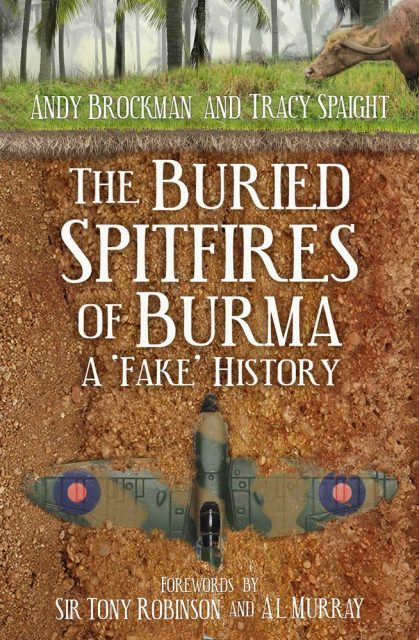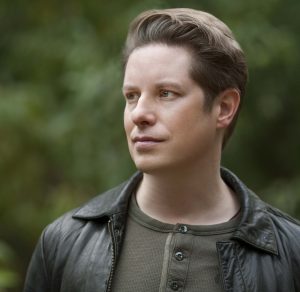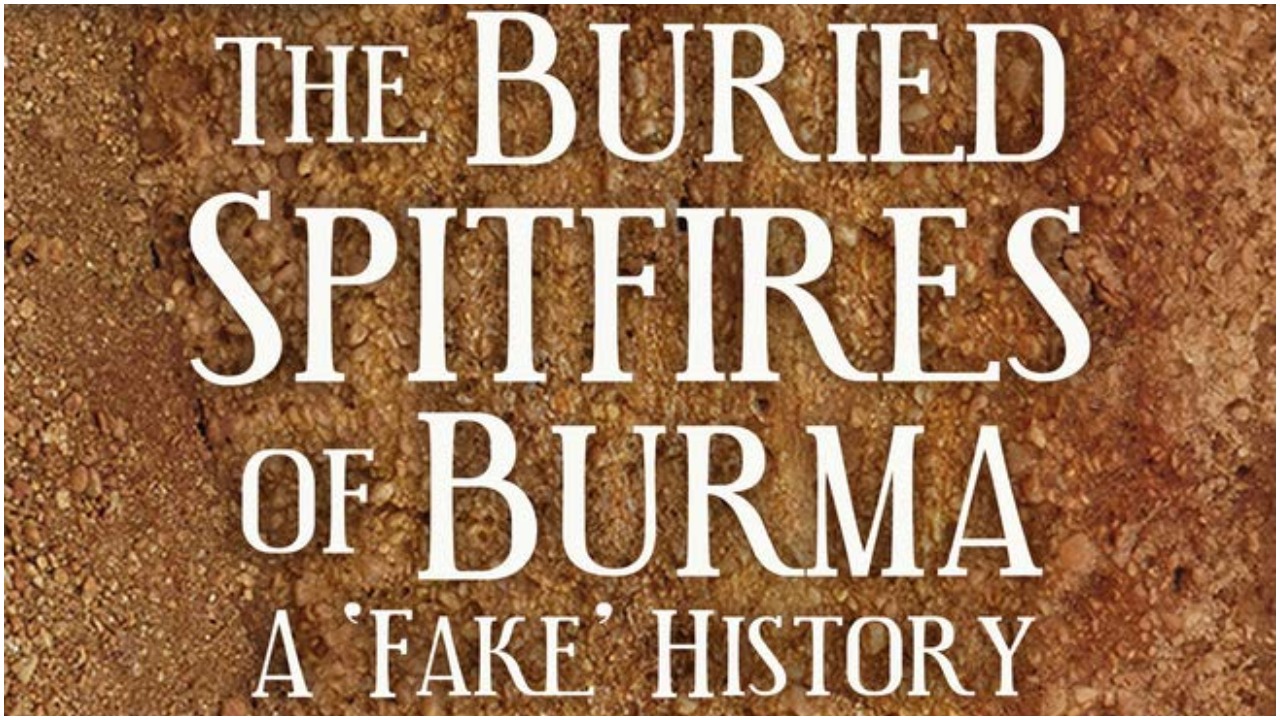Buried Spitfires of Burma: In April 2012, the Telegraph and the Guardian both report that British Prime Minister David Cameron negotiated an agreement with Myanmar President Thein Sein for the recovery and repatriation of twenty crated Spitfires buried at RAF Mingaladon, just outside Yangon, shortly
after the end of WW2.
The agreement came about through the single-minded determination of an ordinary farmer, David Cundall. Beginning in wartime Burma, ‘Buried in Burma’ explores how David’s dream unraveled over the course of a historical ‘whodunnit’ that spans seven decades.
In so doing it follows one of the most bizarre, colorful, and off-the-wall stories since the sensational Hitler Diaries transfixed the World in the 1980’s.
Airworthy Spitfires are eagerly sought after by museums and collectors all over the world. They
are worth millions of pounds. Not surprisingly, a race developed to secure the contract to
excavate this treasure trove of aviation history, with competing teams putting in applications
from Singapore, Israel, and the UK.

After months of lobbying, the Myanmar government finally awarded the contract to David, staging a formal ceremony (with the UK Ambassador) in the new capital of Naypyidaw, the City of the Kings. News of the signing ceremony quickly circled the globe and correspondents and TV crews gathered in Yangon, waiting with increasing excitement as David prepared to fulfill his life’s dream of recovering the planes.
Paul Woodadge speaks to Tracy Spaight and Andy Brockman live on the day their book “The Buried Spitfires of Burma” is released.
Our story begins in the chaos of August and September 1945, when Japanese forces in the Burma
theater finally surrender, almost a month after the dropping of the atomic bombs on Hiroshima
and Nagasaki.
Although the War was over, war material continued to arrive in southeast Asia for
many months, since the supply chain stretched all the way back to the UK and ships already
underway continued to arrive well into 1946. Shipments included at least 124 crated Spitfires
which were delivered to Calcutta in 1945.
The fighters were bound for operation squadrons across South East Asia, to help destroy what remained of Japanese air power. But according to legend, before they could be unpacked, they disappeared!
Some say that the orders came from the very top of the British Government, perhaps from Prime
Minister Winston Churchill himself, perhaps from the Kings own cousin Lord Louis Mountbatten,
the Supreme Allied Commander in Burma, but whoever gave the order it saw the Spitfires buried
amid the deepest “need to know” secrecy, by engineers of the famous Construction Battalions,
the CB’s.
Others say that the British could not be bothered to return to England what was, by late
1945, just so much surplus aluminum, particularly as thousands of warplanes were being
scrapped on airfields from Norway to Australia.
The only fact that anyone has been sure of is that no one – not the world press, not the British
Government, not the Myanmar Government – got to the bottom of the story. That is until now.
The core of our book explores how a team of researchers and archaeologists, funded by video game developer Wargaming, solve the mystery of what exactly happened at Mingaladon in 1945-
46. Readers follow the clues as we sleuth through the archives at the UK National Archive in Kew,
the RAF, and the US Navy archives in Britain and the USA, examining operational log books,
shipping manifests, and the recollections of veterans who served at Mingaladon in 1945-46.
It’s CSI Yangon where we visit the scene of the ‘crime’ (Mingaladon), interview ‘witnesses’ (veterans
who saw and heard things), forensically examine clues (the documents, photographs and
evidence in the ground) and look for the ‘body’ – the missing planes!
The result is a fascinating, surprising, and elegant mixture of Indiana Jones AND Sherlock Holmes.
There were crated planes shipped to Burma. Our living witness did see crates on the airfield at
Mingaladon.
Those crates almost certainly did contain airplanes. But as the team stares down
into the deepening trench at Mingaladon airfield in January 2013, we realize that we have uncovered an even bigger mystery. Someone has already dug up the site!
We interweave David’s quest with an uncannily similar expedition to Ottoman controlled Jerusalem in 1909-1911, led by Captain Montague Parker and Dr. Walter Juvelius, who sought the lost treasures of Solomon’s Temple beneath the Haram esh-Sharif – including the Ark of the Covenant itself.
This ill-fated expedition ends with a mob of citizens chasing the British team through the labyrinth of streets of old town Jerusalem, in the biggest public relations debacle for westerners since the sack of the city by crusaders in the First Crusade.
David’s quest similarly ends when senior officers of the Tatmadaw, who have a reputation for brutality, arrive with trucks full of military police and shut down the Spitfire dig.
David Cundall’s quest features a supporting cast of unforgettable characters ranging from Foreign Office officials at the Yangon Embassy to Burmese Generals; from a former head of Israeli Intelligence to a billionaire real estate tycoon.
From a shady Treasure Hunter reviled throughout Asia for looting historical sites to the British Prime Minister David Cameron and President of Myanmar, to some of the key players in the international networks engaged in WW2 aircraft recovery for wealthy private collectors and museums.
We include fictional characters like the Naga snake and the Hinthe bird to represent Burmese spirituality, and historical figures like British Special Operations Executive (SOE) agent Willie Willis.
Our team proves through a careful desktop study, geophysics and field archaeology that the legendary Spitfires of Burma are exactly that: a legend.
David refused to accept this conclusion and began attacking the competency and conclusions of the research team in the press. Like the conquistador Lope de Aguirre in Werner Herzog’s 1972 film Aguirre Wrath of God, David believes so firmly in the legend that he turns his back on the team and spends the next two years digging up Mingaladon airfield.
No planes are ever found. We later discover that David dug at the airport at least eight times between 1998-2000, and again in 2004-2005!
We explore David’s Spitfire obsession through the lens of the classic work, When Prophecy Fails – and make comparisons with the legend of the Oak Island Money Pit, Yamashita’s Gold and other
legendary quests in search of fabled modern treasures.
We also survey the landscape of modern culture which enables conspiracy theory and pseudo history to thrive, drawing upon David Aaronovitch’s Voodoo Histories and Michael Shermer’s Why People Believe Weird Things.
Finally, we examine the role of the broadcast and print media, 10 Downing Street, and the Burmese government in creating and sustaining the Burma Spitfire legend.
‘Buried in Burma’ highlights the conflict between archaeologists and treasure hunters, those who believe and those who demand evidence; all against the backdrop of a former Colony emerging from decades of military rule and transitioning to Democracy and full participation in the community of nations.
You can get your copy here Amazon and you can find our more on their website www.buriedinburma.com

Tracy Spaight holds a bachelor’s degree in history from Santa Clara University and a master’s degree in Science & Technology Studies from Cornell University. He was a visiting scholar in the History of
Science at Cambridge University in 1998-1999. He has held fellowships from the Deutsche Akademische Austauschdienst, the National Science Foundation and the Russell Sage Foundation, as well as media grants from the Texas Council for the Humanities and the Texas Commission for the Arts.
From 2012-2019, Tracy Spaight was the Director of Special Projects at Wargaming.net, an international video game developer and publisher. Since 2012, he has developed interactive exhibits, 360 VR films, Augmented Reality Applications for history museums around the world.
Some of his recent projects include developing an AR experience for the 75th anniversary of the Battle of Kursk (featured in Wired and Mashable) and the 100th anniversary of the Battle of Jutland for the National Museum of the Royal Navy.

Andy Brockman holds a Master’s degree in Archaeology from Birkbeck College of the University of London and is a specialist in the archaeology of modern conflict. In addition to leading the research and fieldwork for the 2013 expedition to investigate the myth of the buried Spitfires of Burma for Wargaming.net.
Andy has directed excavations on one of the earliest anti-aircraft gun sites in south east London dating from the Zeppelin raids of 1915 and the famous Home Guard training school at the Stately Home of Osterley Park in West London.
Media work includes originating and appearing in an episode of Channel 4’s iconic archaeology series “Time Team” which took a counterfactual look at the defenses of London against a Germaninvasion in World War Two.
He acted as historical advisor for Channel 5’s documentary “What the Dambusters Did Next”, and accompanied author and presenter John Nicol on a visit to Sweden to investigate the story of Lancaster bomber Easy Elsie which crash landed north of the Arctic circle after attacking the German Battleship Tirpitz.
He also worked as a researcher on Channel 4’s “the Real Dad’s Army” and the BBC’s the Reel History of Britain episode which looked at home movies showing the World War Two, Home Guard.
He currently owns and edits the heritage current affairs website thePipeLine, where his work investigating the commercial looting of historical shipwrecks and maritime military graves such as HMS Queen Mary, has attracted the interest of the mainstream media including the BBC One Show, the Guardian and the Times and led to questions in the UK Parliament.
Paul Woodadge Battlefield Guide, historian, author and film maker. Since I became established in Normandy, I was fortunate lucky enough to become internationally regarded as both a battlefield guide, and also as a “friend of the WWII veterans.” Although not qualified in terms of academic achievements, people seem to appreciate my passion and enthusiasm for showing people the historic sites.
This has made me the “go to guy” for many organisations and fellow historians around the world. I am grateful for the thanks and acknowledgement I receive in books by many leading historians including: Normandy ’44, DDay and the Battle for France by James Holland, Storm of Warby Andrew Roberts, In the Footsteps of the Band of Brothers by Larry Alexander, Dog Company: The Boys of Pointe du Hoc by Patrick K O’Donnell, Breakout from Juno by Mark Zuehlke and many others. You can visit Paul’s website here www.ddayhistorian.com and YouTube channel WW2TV
Finally we can put this story and adventure to rest – sadly it was all a pipe dream.
